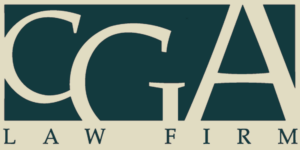Today in our nation’s capital, the Supreme Court heard oral arguments in relation to the Biden administration’s student loan forgiveness plan (hereinafter, the “Plan”). The Court heard arguments in two different cases – Biden v. Nebraska and Department of Education v. Brown – both of which involve similar yet distinct factual backgrounds and issues of law that will impact the very future of this debt cancellation.
While the Court will not reach a final decision on these cases for another several months (many experts predict late June of 2023), today’s events provided a “sneak-preview” of where the Court is likely to come down on these issues, and ultimately, the legality of Biden’s Plan. This article provides a summary of today’s oral arguments and informs its reader of what this means for student loan borrowers going forward.
Background
Currently, over 42 million people in the United States are saddled with outstanding student loan debt, which is approximately 17% of the nation’s adult population. On August 24, 2022, President Biden rolled out his Plan to address the student loan crisis that would cost an estimated $300-500 billion dollars. The Biden administration cited the Higher Education Relief Opportunities for Students Act (“HEROES Act”) as the basis for its authority to implement this student loan forgiveness program. The HEROES Act authorizes the Secretary of Education, during a “national emergency” (i.e. a pandemic), to “waive or modify any statutory or regulatory provision applicable to the student financial assistance programs under title IV of the Act,” which includes the primary federal student loan programs.
As proposed, this Plan would cancel up to $20,000 in outstanding student loan debt for eligible borrowers (click here to see eligibility requirements). After introducing this Plan in August 2022, the Department of Education (hereinafter, the “Department”) received 26 million applications for forgiveness and approved the applications of over 16 million borrowers. However, on November 10, 2022, the Department halted the application process due to multiple legal challenges and court-imposed stays on this debt forgiveness. Accordingly, millions of borrowers are left in limbo as to whether these loans will be forgiven, making financial planning and economic certainty virtually impossible at this time.
Summary of the Cases
The first case that was heard was Biden v. Nebraska, which is a lawsuit initiated by six states (hereinafter, the “States”) against the Biden administration to prevent its implementation of the above-referenced Plan. Initially, the lower court dismissed this case on the basis that none of the States had “standing” to bring the suit. After this decision, the States appealed this case to the Eighth Circuit, which granted the States’ request for an emergency stay of the loan forgiveness program during the pendency of the appeal. Ultimately, the Supreme Court agreed to hear arguments in this case on two primary issues: (1) whether the States have Article III standing to sue and (2) whether the Plan exceeds the Secretary’s authority under the HEROES Act.
The second case that was heard was Department of Education v. Brown, which is a lawsuit initiated by two separately situated student loan borrowers – Myra Brown and Alexander Taylor. Specifically, Brown is not eligible for any relief under the Plan, and Taylor is eligible for $10,000 rather than $20,000 in relief. The primary thrust of Brown and Taylor’s argument is that they were improperly denied the opportunity to comment on the Plan, and furthermore, if the Plan had gone through the typical notice and comment procedures, Brown and Taylor would have requested broader eligibility criteria and greater debt relief. In addition to the Article III standing and statutory authorization issues highlighted above, the Supreme Court also agreed to hear arguments on whether the Plan was adopted in a procedurally proper manner.
Oral Arguments
This section of the article will provide a summary of the legal arguments advanced in the respective cases. While these summaries are not intended to be exhaustive or conclusive, they provide insight into what topics the Court finds to be significant in reaching a decision on the legality of this Plan.
The majority of the legal arguments in Biden v. Nebraska centered on the topic of whether the States have “standing.” Standing refers to a party’s capacity to bring suit in court, and requires a party to show, amongst other things, that the party suffered an injury in fact. Accordingly, many of the justices asked what injury in fact was suffered by the States due to Biden’s Plan. Notably, the States rely on their relationships with entities such as the Missouri Higher Education Loan Authority (“MOHELA”) to establish standing. For example, Missouri suggests that it will vicariously suffer injury in fact by virtue of the financial harms experienced by MOHELA due the cancellation of student loan debt. However, the Biden administration argued that MOHELA is a distinct legal person from Missouri (corporate entity); that MOHELA has the ability to sue and be sued in its own name (and chose not to do so); that MOHELA retains financial independence from Missouri; that Missouri has no legal obligation to pay MOHELA’s debts; and that MOHELA is sufficiently distinct from Missouri to prevent Missouri from being able to successfully assert standing. Undoubtedly, the question of standing will be significant in the decision of whether to uphold or strike down this debt cancellation program.
The other significant topic addressed in Biden v. Nebraska is the separation of powers and “major questions” doctrine. Political Science 101 instructs that it is the role of the legislature to make the law, the role of the executive to enforce the law, and the role of the judiciary to interpret the law. For better or worse, Congress frequently delegates its authority to make law to the executive agencies in broad, sweeping language. The major questions doctrine somewhat limits this practice, stating that if an agency seeks to decide an issue of major national or political importance, its action must be supported by clear congressional authorization. For this reason, many of the justices probed as to how clearly the HEROES Act authorized the Biden administration to cancel student loan debt – especially in light of the fact that student loan forgiveness was a hot ticket political item prior to the pandemic. Expect the major questions doctrine to make an appearance in future opinions (and dissents) in this case.
With respect to the Department of Education v. Brown case, there was certainly overlap in the legal arguments advanced with the Biden v. Nebraska case. However, one significant difference in this case was the issue as to whether the Plan was adopted in a procedurally proper manner. The borrowers in this case argue that they were denied the opportunity to provide comments on the Biden administration’s Plan, and if given this opportunity, the borrowers may have realized greater debt cancellation. However, the borrowers do not deny that the HEROES Act does not require the Department to adhere to the standard notice and comment regulations of the Administrative Procedures Act. Therefore, the borrowers procedural argument is circular, as it is predicated on the assumption that the HEROES Act does not provide a sufficient statutory basis for this Plan.
The Chief Justice then posed a question regarding the “fairness” of this Plan, using a version of the following hypothetical: Person A and B graduated from high school in 2017 and were both deciding what to do with their lives. Person A decided to go to undergrad for computer science and obtained federal loans to finance this endeavor. Person B decided not to go to undergrad and incur debt, but instead started his own lawn care business. Statistically, Person A will have a higher income than Person B, so why is it fair that Person A will have his debt cancelled but Person B receives nothing? In response to this hypothetical, the Biden administration argued that the Secretary’s obligation is to address the needs of federal loan borrowers (not small business owners) and that Person B may be eligible for some alternative form of financial relief outside the scope of this debt cancellation program (i.e. SBA EIDL loans).
Disposition of the Court
Based on today’s proceedings, a healthy measure of pessimism would be appropriate if your budget projects some student loan forgiveness by June. Unsurprisingly, oral arguments revealed that the traditionally-liberal justices (J. Sotomayor, Kagan, and Jackson) adopt a more favorable disposition towards the debt forgiveness, whereas some of the traditionally-conservative justices (C.J. Roberts and J. Thomas, Alito, and Gorsuch) found the program more objectionable. To the extent that there would be any wildcards, Justice Kavanaugh and Barrett would be the most likely candidates based on their lines of questioning. However, as stated previously, you should prepare yourself for the possibility that the Biden administration’s Plan will be struck down.
Going Forward
At the moment, many borrowers with federal student loan debt find themselves in a “catch-22” of sorts. On the one hand, borrowers want to refinance their federal loans in the private sector to avail themselves of lower interest rates. On the other hand, borrowers do not want to refinance until they can be sure that no federal loan forgiveness is available. This is not all that problematic, at the moment, given the repayment pause on federal loans, but this pause is set to expire when the student loan cancellation litigation is resolved or 60 days after June 30, 2023 – whichever comes first. Once this pause has expired, there is no guarantee the interest rates on private loans will be the same or lower than what they are today. A cautious borrower with more federal loan debt than available forgiveness may seek to obtain a private loan for all but the amount of federal loan forgiveness that borrower is eligible for. Furthermore, borrowers may also consider making payments before the pause expires because 100% of what is paid will go towards the principal of the loan. Borrowers may also want to look into eligibility for other government loan forgiveness programs, such as the Public Service Loan Forgiveness program.
Even if the Supreme Court strikes down the Biden administration’s student loan forgiveness program, there remains the possibility that the Biden administration pursues some alternative legal theory for implementing this program. For example, during the oral arguments on Department of Education v. Brown, there was substantial discussion regarding the Secretary’s authorization to cancel student debt under the Higher Education Act. This means that the Biden administration may lose this battle in June, but not necessarily the war, when it comes to student debt cancellation.
For more information on this case or any others, contact Attorney John Wilson at [email protected] or fill out our Contact Us form.

John R. Wilson
Attorney
John R. Wilson provides legal services to Litigation, Bankruptcy, Government, and Education Law clients. Prior to joining CGA Law Firm, John served as an Advisor for the Mason Veterans and Service Members Legal Clinic, where he represented clients in military proceedings, veterans’ appeals, and civil matters. John focused his legal studies on national security law and policy, serving as a research assistant to the National Security Institute and the Articles Selection Editor of the National Security Law Journal.
Read John’s Bio Page in full here.
